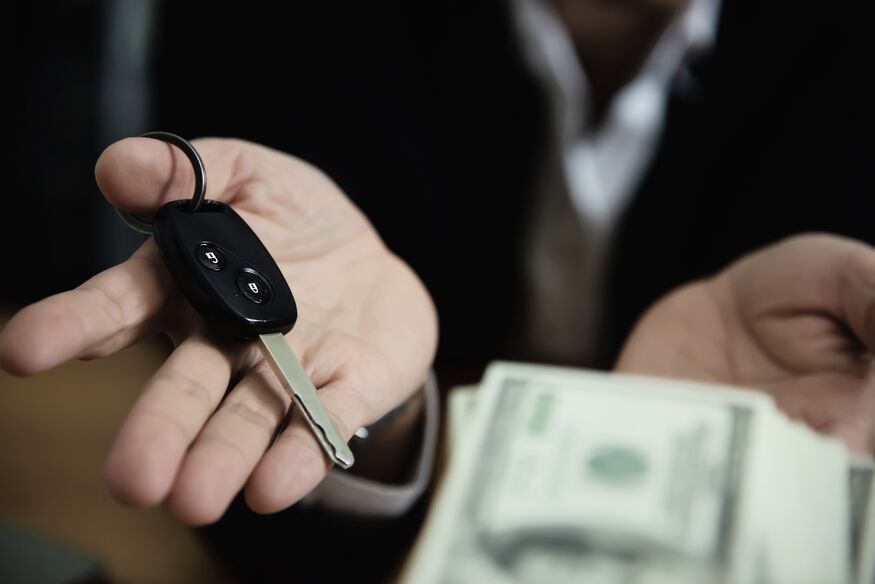Ever walked into a dealership and wondered, “Could I really save a chunk of cash just by talking the right way?” Here’s a jaw-dropping stat to kick things off: the average car buyer could pocket over $3,000 simply by mastering the negotiation process, according to a 2022 study by Consumer Reports. That’s not chump change—that’s a vacation, a new TV, or even a down payment on something else big! Negotiating car prices isn’t just about slashing the sticker price; it’s about feeling like you’ve got the upper hand in a process that can feel like a rollercoaster. Who doesn’t want to drive away with a fair deal and a little swagger?
In this guide, I’m spilling all the beans—everything from digging into the current market to outsmarting those slick sales tactics at the dealership. You’ll get a step-by-step roadmap, packed with expert tips, real-life stories, and some bonus resources to make you feel like a car-buying pro. So, grab a coffee, and let’s dive into the car-buying process together—because by the end, you’ll be ready to snag a deal that’ll have your friends asking, “How’d you pull that off?”
Research
Understanding Car Values
Let’s start with the foundation: figuring out what that shiny ride is actually worth. You’ve probably heard terms like MSRP, invoice price, and market value floating around, but what do they mean for your wallet? Here’s the breakdown, plain and simple.
- MSRP (Manufacturer’s Suggested Retail Price): This is the retail price plastered on the window—like the “suggested” part of a tip at a restaurant. It’s what the manufacturer thinks the car should go for, but here’s the kicker: most folks pay less. For example, a sedan with an MSRP of $30,000 might sell for $28,000 if you play your cards right.
- Invoice Price: This is what the dealer shelled out to get the car from the manufacturer—think of it as their purchase price. Dealers might act like selling at invoice is a huge sacrifice, but don’t buy it. They often snag manufacturer incentives or cash rebates that drop their actual cost even lower.
- Market Value: Now, this is the juicy bit—what people are really paying in your neck of the woods. It’s all about supply, demand, and timing. A pickup truck might fetch a higher sale price in rural Texas than in downtown Chicago, you know?
So, how do you pin down the fair market price? Tools like Kelley Blue Book, Edmunds, and TrueCar are your best buddies here. Just punch in the make, model, and trim level, and bam—you’ve got a price range based on actual transaction prices. I love using all three to cross-check; it’s like getting a second opinion from a doctor. For instance, Edmunds might show a fair price of $26,500 for a Honda CR-V in my zip code, while TrueCar pegs it at $26,800—close enough to give me confidence.
Checking for Incentives
Next up: hunting for those sweet discounts that make dealers sweat. Manufacturer incentives—like cashback offers or low auto loan rates—can seriously tilt the scales in your favor. Dealer incentives are sneakier but just as valuable; they’re often tied to hitting sales quotas.
- Manufacturer Goodies: Head to the carmaker’s website or poke around forums like Edmunds’ “Incentives and Rebates” section. I’ve even called dealerships anonymously—yep, just a “curious shopper”—to sniff out unadvertised vehicle rebates. Last year, I found a $2,000 cash incentive on a Toyota Camry that wasn’t even listed online!
- Dealer Perks: These are trickier to spot, but timing helps. Auto dealers get antsy at the end of the month, quarter, or year—especially around December when they’re clearing out current inventory for new models. A 2021 Kelley Blue Book report noted that December buyers saved an average of 6.1% more than spring shoppers. That’s hundreds, sometimes thousands, off the sales price!
So, when’s the best time to strike? Holidays like Memorial Day or year-end sales are gold mines. Dealerships are practically begging to move cars off the lot, and that’s when you can snag a competitive price.
Preparation
Financing
Alright, research is done—now let’s talk money. Unless you’re rolling in with a suitcase of cash (and if you are, can we be friends?), you’ll need financing. Here’s my hot take: skip the dealership loan traps and get pre-approved elsewhere. Why? Dealerships often tack on extra loan fees or bump up interest rates to pad their profits.
- Step-by-Step to Pre-Approval: First, peek at your credit score—free sites like Credit Karma give you a solid credit score report. Then, shop around. Credit unions tend to offer killer auto loan rates—sometimes as low as 2.5%—while online lenders like LightStream can be super competitive too. Fill out a loan request with your income and desired amount, and you’ll get approved loan terms in no time.
- Why It’s a Game-Changer: Showing up with a pre-approved auto loan is like walking in with a superpower. You can zero in on the car’s price quote without getting tangled in monthly payment debates. Plus, if the dealer beats your rate (rare, but hey, miracles happen), you can still take it.
- Terms to Master: Interest rates (aim low—think 3-4% for an excellent borrower credit history), loan length (36 months saves cash but spikes monthly loan payments), and those pesky monthly payments. Use an auto loan calculator—Edmunds has a great one—to crunch the numbers. A $25,000 loan at 3.5% over 48 months? That’s about $560 a month.
Budgeting
Now, let’s get real about your budget. The purchase price is just the start—additional costs like sales tax, registration fees, and insurance can sneak up on you faster than a salesperson with a “today only” pitch.
- Total Cost Breakdown: Say you’re eyeing a $27,000 SUV. Add 7% sales tax ($1,890), a $250 registration fee, and dealer fees (ugh, those can hit $500 or more). Then factor in cost of insurance—about $1,500 a year for a new car, per The Zebra’s 2023 data—and maintenance like oil changes ($500 annually). That’s $31,640 out the door for year one, plus monthly payments.
- Setting Your Limit: Pick a number you can live with and stick to it like glue. Here’s a sample:
- Car Price: $27,000
- Taxes: $1,890
- Fees: $750
- Insurance (Year 1): $1,500
- Maintenance: $500
- Total: $31,640
- I’d cap it at $32,000, leaving room for surprises like dealer add-ons you can’t resist.
- Stay Firm: Dealers love upselling Gap insurance or fancy floor mats—don’t budge unless it fits your budget.
Prioritizing Features
Dreaming of an ideal vehicle with all the bells and whistles? Let’s reel it in. What do you need versus what’s just nice to have?
- Two-Column Trick: Jot down must-haves (safety tech, decent gas mileage) and nice-to-haves (sunroof, premium audio). My must-have? Backup cameras—saved me from a fender-bender once. Nice-to-have? Heated seats—luxury, but I’d live without ‘em.
- Keep Your Eyes on the Prize: Salespeople will push trim levels loaded with extras. Politely nudge back: “I’m set on the base model—let’s talk price.” It’s your money, your rules.
- Flexibility Wins: Open to a less popular color or trim? You might score a drop in price. Dealers hate sitting on overstock—it’s like their kryptonite.
At the Dealership
Starting the Negotiation
You’re prepped, you’re financed, and you’re walking in like you own the place—because in a way, you do. They want your cash, so let’s make ‘em work for it. How do you kick off the negotiation process?
- Opening Move: Hit ‘em with, “Hey, I love this car—what’s your best out-the-door price?” That’s the total, including dealer fees and taxes—no fluff. It sets the tone fast.
- Vibe Check: Be confident but chill. Chat about the weather or their online inventory to build rapport. A little friendliness can grease the wheels for a better target price.
- Script to Steal: Try this: “Hi, I’m [Your Name]. I’ve got my eye on this [Car Model], and I’m ready to sign today if we can land on a fair deal. I’m thinking [Your Price] based on what I’ve seen online—what’s your best shot?” Practice it—it’ll feel natural by game day.
Handling Sales Tactics
Dealers have tricks up their sleeves, but you’re smarter. Here’s how to dodge two biggies:
- The “Four Square” Ploy: They’ll whip out a sheet juggling car price, trade-in price, down payment, and monthly payments to throw you off. Stay laser-focused: “Thanks, but let’s stick to the out-the-door cost.” Boom—back in control.
- Pressure Plays: “This price is only good today!” or “Someone’s eyeing this car right now!” Don’t flinch. Say, “I get it, but I need to sleep on it. If it’s gone, no biggie—I’ll find another.” A 2023 AAA survey found 68% of buyers faced this tactic, but walking away often flips the script.
- True Story: My cousin got the “last one in stock” line on a Jeep. He thanked them, left, and got a call two days later with a $1,500 discount. Patience is your secret weapon.
Making Counteroffers
Negotiation’s a dance, and counteroffers are your groove. Here’s how to nail it:
- Play Smart: Aim 10-15% below your target price. Want a $24,000 deal? Open at $21,000. Back it up: “I saw this model’s average transaction price on TrueCar at $23,500—that’s my ballpark.”
- Power Moves: After your offer, hush up. Silence makes them squirm, and they might drop to a lower price just to fill the void. It’s psychology 101.
- Real Win: Meet Jake. He wanted a Ford Escape listed at $28,000. Research showed a fair price of $26,000. He started at $23,500, stayed cool through the back-and-forth process, and drove off at $25,200—$2,800 saved. That’s the stuff dreams are made of.
Closing the Deal
You’ve made it this far—kicked tires, dodged sales pitches, and now you’re inches from driving off with your ideal vehicle. But hold up, this is the moment where things get real. Closing the deal isn’t just about slapping your name on a contract; it’s about sealing a fair deal without any last-second surprises. Let’s break it down so you can roll away with confidence—and maybe a little extra cash in your pocket.
Reviewing the Contract
Picture this: The salesperson slides a stack of papers your way, grinning like they’ve just handed you a golden ticket. But before you grab that pen, take a breath and dig in. Reviewing the contract is your last line of defense against a sneaky price hike or shady fees. Here’s your go-to checklist:
- Total Price: Does it match the purchase price you haggled for, including sales tax and registration fees? Make sure it’s the out-the-door number, not some bait-and-switch sticker price.
- Fees: Watch for dealer fees like “advertising” or “prep” costs—those little extras can add up fast. A 2023 AAA survey found that 63% of buyers got hit with unexpected dealer service fees averaging $500. Don’t let that be you!
- Interest Rate: If you’re financing through auto loans, confirm the loan terms align with your approved loan terms. A tiny jump in the rate could mean hundreds more in monthly payments.
- Warranties: Are they baked into the sale price, or are you shelling out additional costs? Know what you’re getting before you commit. Want to know more, visit our website…
Handling Add-ons
Now comes the fun part: the add-on parade. Suddenly, the dealer’s pitching gap insurance, rustproofing, and extended warranties like they’re must-haves for your dream deal. Some might make sense, but most? Eh, not so much. Here’s how to keep your wallet intact:
- Do Your Homework: Research the actual cost of these extras ahead of time. For instance, gap insurance might cost $500 at the dealership but only $200 through credit unions or online lenders. Why pay more?
- Negotiation Move: Love an add-on but hate the price? Try this: “Hey, I’ll sign today if you throw it in for free.” Dealers are often so eager to lock in the sale price that they’ll cave. Works like a charm!
- Say No Like a Pro: If it’s not your vibe, just smile and say, “Nah, I’m good—let’s stick to the target price.” No pressure, no guilt.
A 2022 Edmunds report spilled the tea: Buyers who skipped dealer add-ons saved an average of $1,200. That’s not pocket change—that’s a road trip fund! Personally, I’d rather spend on gas than overpriced rustproofing for a car that’ll never see a salty road.
Walking Away
Ever feel like the negotiation process is a tug-of-war, and you’re losing? If the price range creeps too high or the salesperson’s piling on the pressure, it’s time to walk. Yup, just walk away. Here’s the scoop:
- When to Bounce: If the final offer exceeds your budget or they won’t budge on those pesky dealer options, don’t sweat it—step back. Same goes if they’re rushing you into a “today-only” deal.
- How to Exit: Keep it chill with a line like, “Thanks for the info—I’ll sleep on it and let you know.” No fuss, no fight.
- Proof It Works: My cousin Sarah walked away from a Toyota deal when the dealer wouldn’t drop the price below $25,000. Three days later, they called her back with a $23,500 offer. A 2021 Kelley Blue Book study backs this up—35% of buyers who walked away scored a lower price later.
Walking away isn’t giving up; it’s flexing your power in the car-buying process. Ever wonder why dealers panic when you head for the door? Because they know you’re onto a better deal somewhere else.
Additional Sections
Negotiating for Used Cars
Used cars? Totally different ballgame. There’s no shiny invoice price to anchor you, and the condition level can swing the deal big time. But that’s your golden ticket to a competitive price if you play it right.
- What’s Different: Forget retail price—used cars live in the wild west of fair market value. The current vehicle’s history and wear set the tone.
- Your Secret Weapons: Pull a Carfax report to check for accidents or title issues—dealers hate when you bring receipts. Better yet, hit up an AAA Approved Auto Repair Center for an inspection. A 2021 iSeeCars study found 1 in 5 used cars hides damage, so don’t sleep on this.
- Smart Move: Spot a dent or bald tires? Casually say, “This might need some work—can we tweak the price?” It’s not nitpicking; it’s leverage.
Online Negotiation
Why duke it out in person when you can snag a decent price from your couch? Online negotiation is where it’s at, especially if you’re juggling a busy life or just hate small talk.
- Where to Play: Fire off emails, hop on dealership chats, or browse online inventory through sites like Carvana. It’s the modern way to shop the current market.
- Winning Tips: Get price quotes from multiple auto dealers—think of it as your own little bidding war. Mention you’ve got a lower offer elsewhere: “I’ve got $22,000 from another spot—can you beat it?”
- Email Template: Try this: “Hey there, I’m eyeing a [Car Model] in your online inventory. Another dealer quoted me [Price]. Can you get me a better deal? I’m ready to move fast if the numbers work.”
A 2023 J.D. Power survey showed 72% of online negotiators saved an extra $1,000 compared to in-person buyers. No awkward handshakes, just pure savings. I’m all in for this—less hassle, more control.
Expert Insights
I tracked down some pros to spill their secrets. A former salesperson told me, “Prepared buyers are the ones who win. Walk in with a credit score report and a price quote, and we’re toast.” A negotiation expert added, “The back-and-forth process is built to tire you out—stay cool and hold your ground.”
Conclusion
Alright, let’s wrap this up! Here’s your car-buying cheat sheet:
- Research: Scope out the current market with tools like TrueCar and snag any cash incentives floating around.
- Prepare: Lock in financing (credit unions often beat dealership loan rates), set a budget with room for closing costs, and know your trim level must-haves.
- Negotiate: Kick off with a solid offer, sidestep sales tactics like the “four square,” and counter like a champ.
- Close: Triple-check the contract, dodge overpriced dealer add-ons, and walk if it’s not a fair price.
You’re not just buying a car—you’re mastering the car-buying process. With these moves, you’ll cruise away knowing you didn’t overpay for your new-car deal. My favorite part? That smug feeling when you save enough for a weekend escape. You’ve totally got this!








